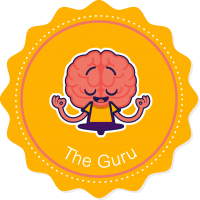There are plenty of creative brainstorming techniques to choose from. Here are some of the most popular ones:
Reverse brainstorming
In a typical brainstorming session, the group is asked to consider solutions to a problem. This means that they will spend time thinking about the outcome — the end goal — rather than the root of the problem — the starting point. Reverse brainstorming is simply the opposite: teams are asked to ideate on the problem instead of the solution. This type of brainstorming is done before the start of an important project, as it helps teams anticipate any future obstacles that might arise.
Random word brainstorming
One of the main goals of a brainstorming session is to come up with new ideas. One of the best ways to do this is to say the first words that come to mind when a specific topic or subject is mentioned. Random word brainstorming allows for exactly that. The team is given a problem, and they need to shout out the first words that they think of, regardless of what they are. These words are then written down and later put into interesting combinations to see if they will lead to a usable solution. This brainstorming method is extremely fast and usually very efficient at solving a defined problem.
The 5 Whys Method
Like the reverse brainstorming method, the 5 Whys method aims to look at the root causes of a problem to stop that same issue from arising again. This method attempts to curb the problem before it can reoccur by asking the question “why?” over and over until it can no longer be answered. Once you reach this stage, you have arrived at the root cause of the issue.
SCAMPER model
Developed by Bob Earle, an author of creativity books for kids, the SCAMPER model was originally a game aimed at imagination development in adolescents. It has, however, become popular in the corporate world as a means of improving and encouraging creativity in team members when dealing with complex, defined problems. Using this model, your team will view a problem through 7 filters: substitute, combine, adapt, modify, put to another use, eliminate, and reverse.
Rapid ideation
Rapid ideation brainstorming is almost the exact same thinking model as random word brainstorming. In this method, however, everyone writes down the solutions they are thinking of instead of shouting them out. This gives participants a bit more privacy with their immediate thoughts — possibly leading to even more creative and revolutionary outcomes.
Starbursting
Once again, brainstorming can change based on the team’s perspective and each session’s expected outcome. Starburst brainstorming focuses on getting the team to ask questions instead of coming up with answers.

